
Choosing Bug Spray for Succulents: Safety and Effectiveness

Succulents are a popular choice for indoor and outdoor gardening due to their unique and low-maintenance nature. However, like any other plant, succulents are prone to pests such as aphids, mealybugs, and spider mites. To protect these beloved plants from infestations, it is important to choose the right bug spray that is both safe and effective.
We will explore the different types of bug sprays available for succulents and discuss their safety and effectiveness. We will look at the various ingredients commonly found in bug sprays and their impact on succulents and the environment. Additionally, we will provide tips on how to properly apply bug sprays to ensure the best results while minimizing any potential harm to your succulents. By the end of this article, you will have a better understanding of how to choose the right bug spray for your succulents and keep them healthy and pest-free.
- Look for bug sprays specifically labeled for use on succulents
- Check the active ingredients on the bug spray label to ensure it is effective against the pests you are targeting
- Opt for organic or natural bug sprays to minimize potential harm to your succulents
- Test the bug spray on a small area of your succulent before applying it to the entire plant
- Follow the instructions on the bug spray label for proper application and dosage
- Consider using alternative pest control methods like insecticidal soap or neem oil
- Keep your succulents in a clean and well-maintained environment to minimize the need for bug sprays
- Frequently Asked Questions
Look for bug sprays specifically labeled for use on succulents
When it comes to protecting your beloved succulents from pests, it is crucial to choose bug sprays that are specifically formulated for use on these plants. Succulents have unique characteristics and requirements, and using the wrong bug spray can be detrimental to their health.
Why is it important to use bug sprays labeled for succulents?
- Succulents have thick, fleshy leaves and stems that make them more sensitive to chemicals compared to other plants. Bug sprays not designed for succulents may contain harsh ingredients that can damage or even kill your precious plants.
- Bug sprays formulated for succulents are typically gentler and less toxic, ensuring the safety of your plants while effectively eliminating pests.
- Using bug sprays specifically labeled for succulents also helps to prevent any potential damage to beneficial insects that may be present in your garden, as these sprays are usually targeted towards specific pests.
What should you look for when choosing bug sprays for succulents?
- Natural and organic ingredients: Opt for bug sprays that are made from natural and organic ingredients whenever possible. These products are typically safer for both your succulents and the environment.
- Targeted pest control: Look for bug sprays that specifically mention the pests they are effective against. Different pests may require different active ingredients, so choose the one that is most suitable for your specific problem.
- Reviews and recommendations: Before making a purchase, read reviews and seek recommendations from other succulent enthusiasts. This can give you valuable insights into the effectiveness and safety of different bug sprays.
- Safety precautions: Always follow the instructions and safety precautions provided by the manufacturer. This will ensure that you are using the bug spray correctly and minimizing any potential risks to yourself and your succulents.
Remember, the health and well-being of your succulents should always be a top priority. By choosing bug sprays specifically labeled for use on succulents, you can effectively protect your plants from pests while ensuring their safety and longevity.
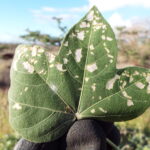 Understanding Leaf Loss in Succulents: Causes and Solutions
Understanding Leaf Loss in Succulents: Causes and SolutionsCheck the active ingredients on the bug spray label to ensure it is effective against the pests you are targeting
When it comes to choosing bug spray for your succulents, it is crucial to select a product that is both safe and effective. One of the first things you should do is check the active ingredients listed on the bug spray label. This will give you a clear idea of whether the product is suitable for the specific pests you are targeting.
Different bugs require different active ingredients to be effectively eliminated. For instance, if you are dealing with aphids, mealybugs, or spider mites, you'll want to look for a bug spray that contains ingredients like pyrethrin or neem oil. These substances are known for their ability to control and repel these common succulent pests.
On the other hand, if you are dealing with scale insects or whiteflies, you may need a bug spray that contains ingredients like horticultural oil or insecticidal soap. These ingredients are highly effective in suffocating and killing these specific types of pests.
It is important to note that not all bug sprays are safe for succulents. Some products may contain harsh chemicals that can damage or even kill your plants. Always opt for organic or natural bug sprays that are specifically formulated for use on succulents.
Consider the Safety Precautions
Before purchasing any bug spray, take the time to read and understand the safety precautions mentioned on the label. Some bug sprays may require you to wear gloves, protective clothing, or a mask during application. It is essential to follow these instructions to protect yourself and prevent any potential harm.
Additionally, keep in mind that certain bug sprays may be harmful to children, pets, or beneficial insects like bees and butterflies. If you have a household with kids or pets, or if you are an avid gardener who values pollinators, opt for bug sprays that are labeled as safe for use around children, pets, and beneficial insects.
Test on a Small Area
Before spraying the bug spray directly on your succulents, it is always a good idea to test it on a small, inconspicuous area of the plant. This will help you ensure that the bug spray does not cause any adverse effects, such as burning or discoloration. If no negative reactions occur within 24 hours, you can proceed with treating the entire plant.
 Is My Succulent Infested with Pests? Signs of White Web Infection
Is My Succulent Infested with Pests? Signs of White Web InfectionFollow Application Instructions
Each bug spray product comes with specific application instructions. It is crucial to carefully read and follow these instructions to maximize effectiveness and minimize potential damage to your succulents. Some bug sprays may require you to apply the product directly to the pests, while others may recommend spraying the entire plant.
Remember to thoroughly coat all the affected areas, including the undersides of leaves, as pests often hide in these hard-to-reach spots.
By considering the active ingredients, safety precautions, conducting a small test, and following the application instructions, you can choose a bug spray that is both safe and effective for your succulents. With the right bug spray, you can protect your beloved plants and keep pesky pests at bay.
Opt for organic or natural bug sprays to minimize potential harm to your succulents
When it comes to protecting your beloved succulents from pesky bugs, it's important to consider the safety and effectiveness of the bug spray you choose. While there are many options available, opting for organic or natural bug sprays is a wise decision. These alternatives are not only effective in controlling pests, but they also minimize potential harm to your succulents and the environment.
Why choose organic or natural bug sprays?
Using organic or natural bug sprays is a safer approach to pest control for your succulents. Unlike conventional insecticides that often contain harmful chemicals, organic or natural bug sprays rely on ingredients derived from plants, minerals, or other natural sources. This means you can protect your succulents without exposing them to potentially harmful toxins.
Additionally, organic or natural bug sprays are environmentally friendly. They break down more easily, reducing the risk of long-term contamination of the soil or water sources. By choosing these alternatives, you contribute to a healthier ecosystem and help preserve the delicate balance of nature.
Effectiveness of organic or natural bug sprays
Contrary to popular belief, organic or natural bug sprays can be just as effective as their chemical counterparts. Many natural ingredients, such as neem oil, garlic extract, or pyrethrum, have proven insecticidal properties and are commonly used in organic pest control products. These ingredients target pests while being less harmful to beneficial insects, such as ladybugs or bees, which are essential for maintaining a healthy garden ecosystem.
 Causes of Red Tips on Succulent Plants: A Comprehensive Guide
Causes of Red Tips on Succulent Plants: A Comprehensive GuideHowever, it's important to note that organic or natural bug sprays may require more frequent applications compared to conventional insecticides. Since they often break down more quickly, regular monitoring and reapplication may be necessary to ensure ongoing protection for your succulents.
Considerations when using organic or natural bug sprays
While organic or natural bug sprays are generally safer for your succulents, it's still essential to follow the instructions provided by the manufacturer. Some natural ingredients can cause plant damage if used improperly or in excessive amounts. Always read the label carefully and use the bug spray as directed to avoid any unwanted side effects.
Furthermore, it's important to remember that prevention is key in pest control. Regularly inspect your succulents for signs of pests and maintain a clean and healthy growing environment. This will help minimize the need for bug sprays and reduce the risk of infestations.
- Choose organic or natural bug sprays to protect your succulents
- Ensure the bug spray is effective against targeted pests
- Read and follow the instructions provided by the manufacturer
- Inspect your succulents regularly and maintain a clean growing environment
By considering the safety and effectiveness of bug sprays for your succulents, you can ensure their well-being while effectively controlling pests. Opting for organic or natural bug sprays not only protects your plants but also contributes to a healthier and more sustainable gardening practice.
Test the bug spray on a small area of your succulent before applying it to the entire plant
When it comes to protecting your beloved succulents from pests, choosing the right bug spray is crucial. However, not all bug sprays are created equal, and it's important to consider both safety and effectiveness before making a decision. One way to ensure the bug spray you choose is safe for your succulents is to test it on a small area of the plant before applying it to the entire plant.
Testing the bug spray on a small area allows you to observe how the succulent reacts to the product. Some sprays may cause discoloration or damage to certain types of succulents, while others may be perfectly safe. By applying the bug spray to a small section of the plant, you can assess any potential negative effects before risking harm to the entire succulent.
Additionally, testing the bug spray allows you to evaluate its effectiveness. You can observe whether the spray effectively repels or eliminates the pests that are troubling your succulents. If the bugs continue to invade the treated area, it may be a sign that the bug spray is not the right choice for your specific pest problem.
 Understanding and Treating the White Substance on Succulents
Understanding and Treating the White Substance on SucculentsRemember to follow the instructions provided by the bug spray manufacturer during the testing process. This includes the recommended amount to apply and the duration of time to leave the spray on the plant. It's also important to consider the specific pests you are targeting, as some bug sprays are designed to address specific types of insects.
Ultimately, testing the bug spray on a small area of your succulent is a wise precautionary step. It allows you to ensure the bug spray is safe for your plant and effective in combating the pests that threaten its health. By taking the time to test before applying, you can protect your succulents with confidence.
Follow the instructions on the bug spray label for proper application and dosage
When it comes to protecting your succulents from pesky bugs and insects, choosing the right bug spray is crucial. Not only do you want a product that is effective in eliminating pests, but you also want to ensure it is safe for your precious succulents.
Follow the instructions on the bug spray label for proper application and dosage. Each product may have specific guidelines, so it's important to read and understand them before using the bug spray on your succulents. This will help you avoid any potential harm to your plants and ensure you are using the product correctly.
Consider the safety aspect
Safety should be a top priority when choosing bug spray for your succulents. Look for products that are specifically formulated for use on plants and are labeled as safe for succulents. These bug sprays are designed to effectively control pests without causing harm to your plants.
Additionally, opt for bug sprays that are organic or natural if possible. These products often contain ingredients derived from plants or essential oils, making them safer for both your succulents and the environment.
Evaluate effectiveness
While safety is important, you also want to ensure that the bug spray you choose is effective in eliminating pests from your succulents. Look for bug sprays that have a proven track record in controlling common succulent pests such as mealybugs, aphids, or spider mites.
 Causes of Blue Discoloration in Succulent Leaves
Causes of Blue Discoloration in Succulent LeavesCheck customer reviews and feedback online to get an idea of the bug spray's effectiveness. People who have used the product can provide valuable insights regarding its performance and whether it effectively eradicated the pests they were dealing with.
Consider using natural alternatives
If you prefer to avoid using bug sprays altogether, you can explore natural alternatives to control pests on your succulents. Some popular options include using neem oil, insecticidal soap, or homemade remedies like a mixture of water and dish soap.
Research and experimentation are key when it comes to finding the best bug spray or natural alternative for your succulents. Pay attention to the specific pests you are dealing with and choose a solution that targets them effectively.
- Monitor your succulents regularly for signs of pest infestation.
- Follow a consistent care routine to keep your succulents healthy and resilient.
- Consider preventive measures such as proper watering and adequate sunlight to minimize pest problems.
By choosing the right bug spray for your succulents, you can protect them from pests while ensuring their safety and overall well-being.
Consider using alternative pest control methods like insecticidal soap or neem oil
When it comes to protecting your succulents from pests, it's important to consider alternative pest control methods before reaching for bug spray. Insecticidal soap and neem oil are both effective and safe options for keeping pests at bay.
Insecticidal soap:
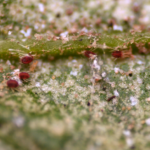 Eliminating White Webs on Succulents: A Comprehensive Guide
Eliminating White Webs on Succulents: A Comprehensive GuideInsecticidal soap is a natural and non-toxic solution for controlling common succulent pests such as aphids, mealybugs, and spider mites. It works by suffocating the insects and disrupting their cell membranes. To use insecticidal soap, simply dilute it according to the instructions on the packaging and spray it directly on the affected plants. Make sure to cover all surfaces, including the undersides of leaves where pests often hide.
Neem oil:
Neem oil is derived from the seeds of the neem tree and has been used for centuries as a natural pesticide. It works by interfering with the insect's hormonal system, making it difficult for them to feed and reproduce. Neem oil is effective against a wide range of succulent pests, including aphids, scales, and whiteflies. Dilute neem oil according to the instructions and apply it to the plants using a spray bottle or a brush. It's important to note that neem oil may leave a residue on the plants, so avoid applying it in direct sunlight to prevent leaf burn.
Both insecticidal soap and neem oil are safe to use on succulents and won't harm beneficial insects or pollinators. However, it's always a good idea to test these products on a small area of your succulents before applying them to the entire plant, as some varieties may be more sensitive to certain treatments.
Choosing the right bug spray for succulents
If alternative pest control methods don't provide the desired results, or if the infestation is severe, you may need to resort to using bug sprays specifically formulated for succulents. When choosing a bug spray, it's important to consider both safety and effectiveness.
- Safety: Look for bug sprays that are labeled as safe for succulents and indoor plants. Avoid products that contain harsh chemicals or synthetic pesticides, as they can be harmful to your plants and the environment.
- Effectiveness: Different bug sprays target different types of pests, so it's essential to identify the specific pest affecting your succulents before purchasing a bug spray. Read the product labels carefully to ensure that it is effective against the pests you are dealing with.
Additionally, consider the application method and frequency of use. Some bug sprays may require multiple applications over a period of time to fully eliminate the infestation, while others provide long-lasting protection with a single application.
Remember to always follow the instructions provided by the bug spray manufacturer and take appropriate safety precautions when using any type of pesticide.
 White-Dotted Succulents: Potential Poisonous Effects on Pets
White-Dotted Succulents: Potential Poisonous Effects on PetsKeep your succulents in a clean and well-maintained environment to minimize the need for bug sprays
When it comes to keeping your succulents healthy and thriving, prevention is always better than cure. By maintaining a clean and well-maintained environment for your plants, you can minimize the risk of bug infestations and reduce the need for bug sprays.
However, even the most diligent succulent owners may encounter pests at some point. In such cases, using bug sprays can be an effective solution to protect your plants. But with so many options available on the market, it's important to choose a bug spray that is both safe and effective for your succulents.
Safety First: Choosing Bug Sprays for Succulents
When it comes to selecting a bug spray for your succulents, safety should be your top priority. Avoid using chemical-based bug sprays that may harm your plants or pose a risk to your health. Instead, opt for organic or natural bug sprays that are specifically formulated for use on succulents.
Look for bug sprays that are labeled as safe for succulents and contain ingredients such as neem oil, pyrethrin, or insecticidal soap. These ingredients are effective in controlling common succulent pests while being gentle on your plants.
Pro Tip: Before applying any bug spray to your succulents, always read and follow the instructions provided by the manufacturer. This will ensure that you use the product correctly and avoid any potential damage to your plants.
Effectiveness Matters: Choosing Bug Sprays for Succulents
While safety is crucial, it's equally important to choose a bug spray that is effective in eliminating pests from your succulents. Look for bug sprays that are specifically formulated to target the pests commonly found on succulents, such as mealybugs, aphids, or spider mites.
 Identifying and Treating Root Rot in Succulents: Signs and Options
Identifying and Treating Root Rot in Succulents: Signs and OptionsConsider the severity of the infestation when selecting a bug spray. If the infestation is minor, a mild bug spray may suffice. However, for more severe infestations, you may need a stronger bug spray or opt for multiple treatments to completely eradicate the pests.
Pro Tip: Always start with a small area or a single plant when trying out a new bug spray. This will allow you to assess its effectiveness without risking harm to your entire succulent collection.
- Choose bug sprays labeled safe for succulents
- Look for organic or natural formulations
- Check for ingredients like neem oil, pyrethrin, or insecticidal soap
- Consider the severity of the infestation
- Start with a small area or a single plant for testing
By considering both the safety and effectiveness of bug sprays, you can ensure that your succulents stay bug-free while maintaining their health and beauty.
Frequently Asked Questions
1. Is bug spray safe to use on succulents?
Yes, but it is important to choose a bug spray specifically labeled as safe for use on succulents. Avoid using general-purpose bug sprays that may contain harsh chemicals that can harm your succulents.
2. Can bug spray harm succulents?
If used properly and according to the instructions, bug spray labeled as safe for succulents should not harm your plants. However, it is always a good idea to test a small area of your succulent before applying the bug spray to the entire plant.
3. What types of bugs can bug spray effectively control on succulents?
Bug sprays labeled for use on succulents can effectively control common pests such as aphids, mealybugs, spider mites, and whiteflies. It is important to identify the specific pest affecting your succulent and choose a bug spray that targets that pest.
4. How frequently should I use bug spray on my succulents?
The frequency of bug spray application depends on the severity of the pest infestation. In general, it is recommended to apply bug spray every 7-14 days until the infestation is under control. Be sure to follow the instructions on the bug spray label for specific guidelines.
 How to Save a Moldy Succulent: Removing Mold and Restoring Health
How to Save a Moldy Succulent: Removing Mold and Restoring HealthIf you want to read more articles similar to Choosing Bug Spray for Succulents: Safety and Effectiveness, you can visit the Pests and Diseases category.

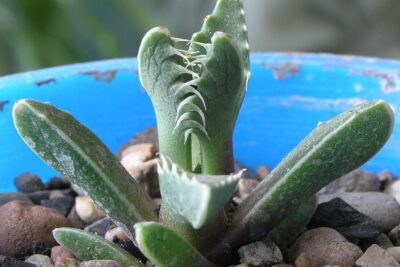

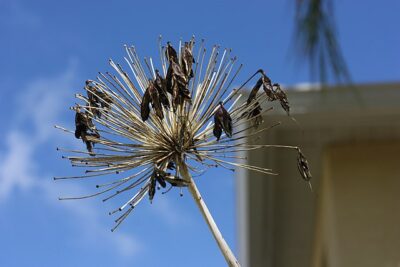
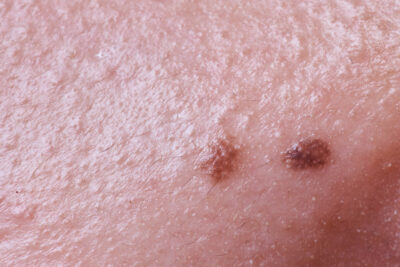

You Must Read